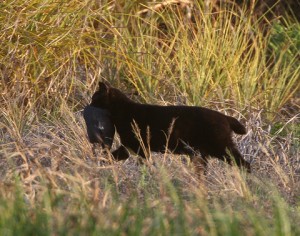We were alarmed to read that Hawai`i County Mayor Billy Kenoi proclaimed March as “advoCats Month” on the Big Island (Environment Hawai‘i, May 2016). This proclamation, which endorsed Trap-Neuter-Return (TNR) programs, indicates a striking lack of understanding of the impacts of feral cats on people and wildlife.
All the main Hawaiian Islands have a serious feral cat problem, but TNR programs fail to reduce feral cat populations. Instead, they exacerbate the ecological and public health crises. Rather than slowly eliminating feral cats, as the mayor’s proclamation would have us believe, TNR programs establish and maintain perpetual colonies of these feral animals.
Such colonies pose severe risks to human and wildlife health. Toxoplasmosis, for example, is a disease that can cause miscarriages, fetal deformities, blindness, and death in people. New studies have also linked human infection with mental disorders such as schizophrenia.
Toxoplasmosis is spread by cats. Infected cats excrete tiny infectious, parasitic eggs in their feces in parks, beaches, and neighborhoods where they roam, and these eggs persist and remain viable for years in soil and water. Accidentally ingesting or inhaling just one egg is enough to cause infection.
Unfortunately, the evidence indicates that cats have caused widespread environmental contamination throughout Hawai‘i. A growing number of these infections with toxoplasmosis have killed Hawaiian monk seals, nene (the Hawaiian goose), and ‘alala (the Hawaiian crow). For `alala, which are set to be introduced to Pu‘u Maka‘ala Natural Area Reserve this year, the threat from cat-spread toxoplasmosis is especially concerning. As Environment Hawai‘i reported last month (“NARS Commission Grants Permit for `Alala Release at Pu`u Maka`ala”), protecting this highly endangered bird from toxoplasmosis is one of the release team’s biggest worries. This cat-spread pollution, however, is only made worse by TNR programs, such as those run by advoCats, that maintain feral cats roaming outdoors.
Feral cats are also a major non-native predator that kill endangered native birds such as palila, `ua`u (Hawaiian petrel), and ae`o (Hawaiian stilt). A single feral cat, hungry or not, can devastate Hawai`i’s native birds, many of which are found nowhere else in the world.
We recognize the good intentions behind Mayor Kenoi’s proclamation and the work done by advoCats, and we agree wholeheartedly that feral cat populations need to be reduced. What’s needed, however, is not TNR but a management strategy that reliably reduces feral cat numbers while simultaneously protecting people and Hawai‘i’s precious wildlife. The best way to achieve these goals is to remove feral cats to a shelter, where they have the opportunity of finding a forever home, or relocate feral cats into safe and permanent enclosures, where groups such as advoCats can look after them. These solutions offer the best chance of responsibly reducing, and ultimately eliminating, Hawai`i’s feral cat problem.
Chris Farmer
Hawai`i Program Director
American Bird Conservancy
Hawai`i Volcanoes National Park
Grant Sizemore
Director of Invasive Species
American Bird Conservancy
Washington, D.C.
Volume 26, Number 12 June 2016


Leave a Reply